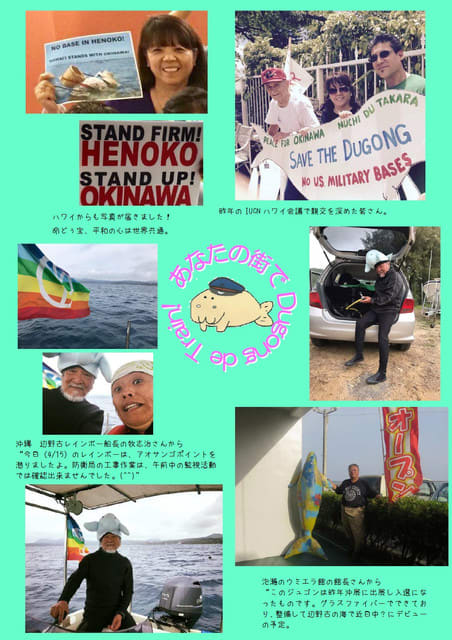Invite all of you to join our action

We, Save the Dugong Campaign Center, set up the action “Dugong de Train! “in Osaka on June 15.
https://blog.goo.ne.jp/sdcc/e/364ba863218def34bfeddd13fb9cb0e7
We're calling for the action in your town to save the Dugongs. You can ride on the train, or stand in front of the station or anywhere you like, with the dugong mascots or posters And take your picture with the mascot or the poster, and send us the pictures in email or post on Facebook.
It would be great if you could act on the 15th.
Why the 15th?
We pronounce 15, jugo in Japanese. And dugong →jugon. Jugo is similar to jugon in sound. So, on 15th, we call it the day of the dugong every month.


We, Save the Dugong Campaign Center, set up the action “Dugong de Train! “in Osaka on June 15.
https://blog.goo.ne.jp/sdcc/e/364ba863218def34bfeddd13fb9cb0e7
We're calling for the action in your town to save the Dugongs. You can ride on the train, or stand in front of the station or anywhere you like, with the dugong mascots or posters And take your picture with the mascot or the poster, and send us the pictures in email or post on Facebook.
It would be great if you could act on the 15th.
Why the 15th?
We pronounce 15, jugo in Japanese. And dugong →jugon. Jugo is similar to jugon in sound. So, on 15th, we call it the day of the dugong every month.












